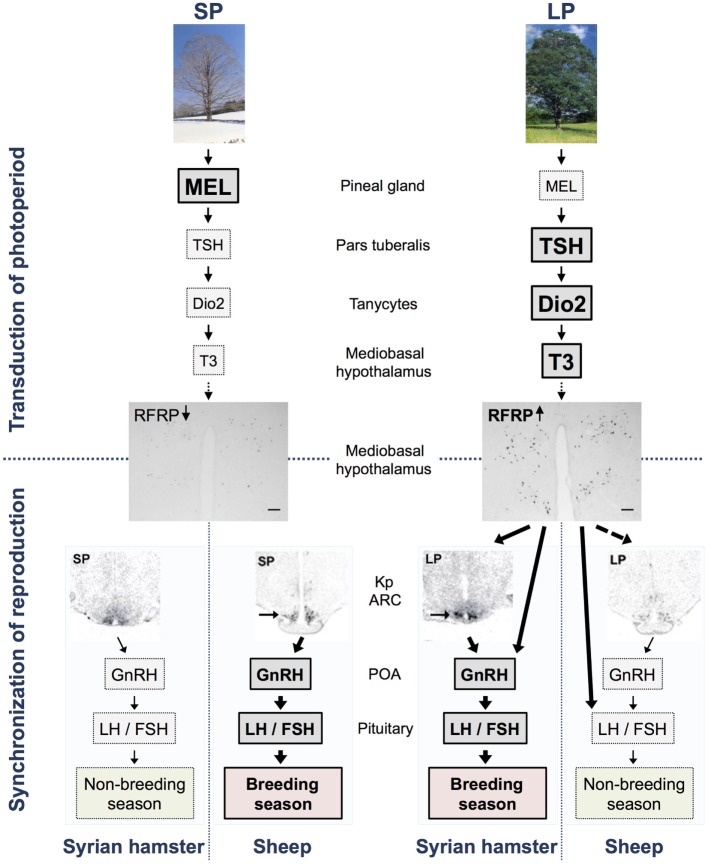Figure 1.
Model of the transduction of photoperiod and seasonal regulation of the reproductive axis in long (Syrian hamsters) and short day (sheep) breeders. In short photoperiod (SP), the large production of melatonin from the pineal gland inhibits TSH synthesis in the pars tuberalis, whereas the lower production of melatonin in long photoperiod (LP) allows the synthesis and release of TSH. TSH is transmitted via TSH receptors expressed in tanycytes surrounding the third ventricle and activates the enzyme deiodinase 2 (Dio2). Dio2 ultimately controls and increases the local availability of the active form of the thyroid hormone, T3, in the mediobasal hypothalamus. Subsequently, T3 regulates the expression of RFRP also in the mediobasal hypothalamus so that there is a high expression in LP and a low expression in SP in both LP and SP breeders, as demonstrated with pictures of RFRP-ir neurons in brains from Syrian hamster kept in LP and SP [scale bar 100 μm, taken from Ref. (59)]. In Syrian hamsters, RFRP subsequently acts either directly on GnRH neurons or indirectly via kisspeptin (kp) neurons (indicated by arrows) or other interneurons in the arcuate nucleus (ARC) to synchronize reproduction with season. In sheep, RFRP regulates the reproductive axis directly at the level of the pituitary (indicated by arrow) and possibly also directly or indirectly via kp neurons (indicated by dotted arrow) and/or GnRH neurons. Expression of the gene encoding kp in the ARC displays an opposite photoperiodic regulation in the two species being elevated in both LP-adapted sexually active Syrian hamsters [see arrow in picture taken from Ref. (33, 60)] and SP-adapted sexually active sheep [see arrow in picture taken from Ref. (61)]. This model does not describe specific effects of RFRP-3 reported in each species, sex, and photoperiod, and readers are referred to Table 1 for a detailed summary.

